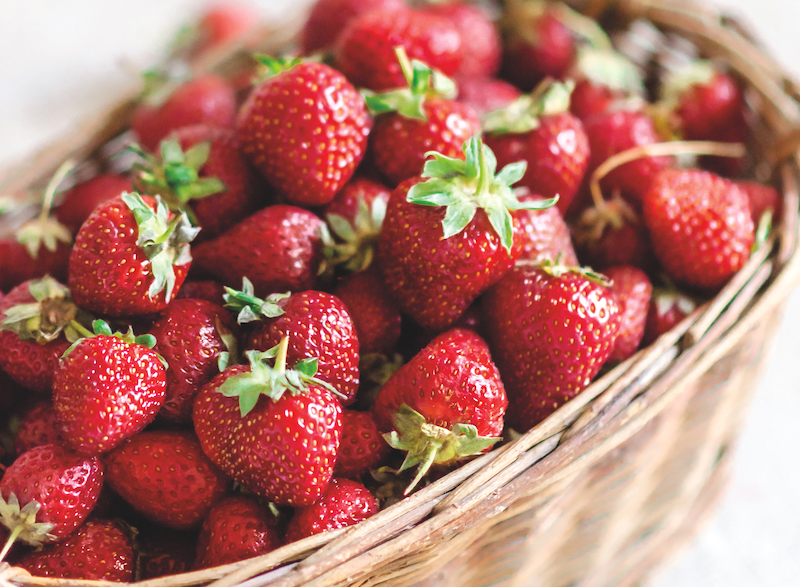Let’s talk about berries and how to grow them. We’ve collected a wealth of helpful tips courtesy of bloggers, YouTubers and Instagrammers who are happy to share their knowledge of soft fruit plants. Their excellent advice will help you grow bumper crops of the most delicious soft fruit you’ve ever tasted, including strawberries, blueberries, raspberries, blackberries and gooseberries.
This article was reviewed by the Suttons horticultural team and updated on 21 February 2024.
Contents:
- Best general advice on growing soft fruit
- Best advice on growing blackberries
- Best advice on growing blueberries
- Best advice on growing gooseberries
- Best advice on growing raspberries
- Best advice on growing strawberries
Best general advice on growing soft fruit
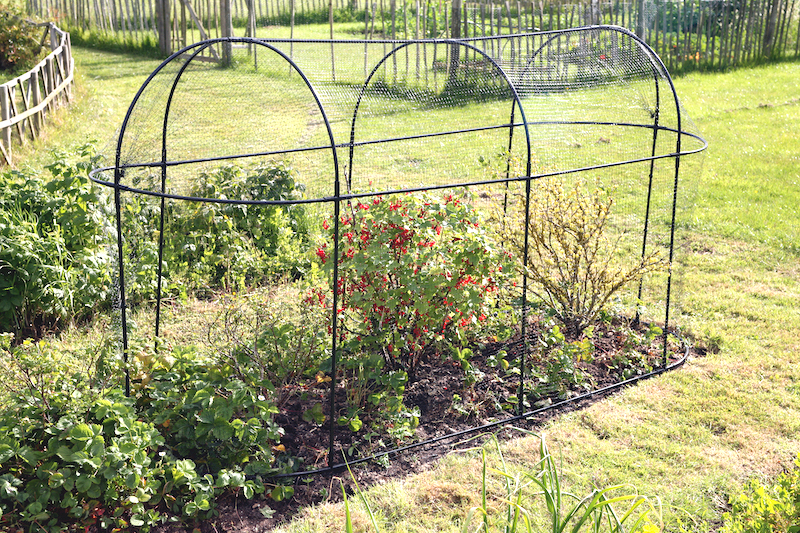
Image: Suttons
“Every garden, of every size, should include at least a few berries,” says Benedict Vanheems from Grow Veg. He recommends starting with something easy, like strawberries which, if you go for early, main crop, and late fruiting varieties, can see you harvesting all the way from spring right through to autumn. Check out his YouTube video for an excellent overview.
If you’re planting soft fruit bushes like currants, raspberries, blackberries and gooseberries, Pete at Real Men Sow says the best time is during their dormant period between November and February, but preferably November while the soil still holds some warmth. He says fruit bushes are a great investment because a couple of harvests will cover your costs and you could still be enjoying the lovely fruit twenty years later.
A fruit cage offers the best protection for your soft fruit from birds and other creatures who’d like nothing better than to feast on all your gorgeous produce. If you’d like to see the type of thing we mean, Instagrammer Clare @thevegplotthickens_ showcases hers. This year, she’ll be making the most of her new cage by filling it with a variety of succulent soft fruit, including strawberries.
Best advice on growing blackberries
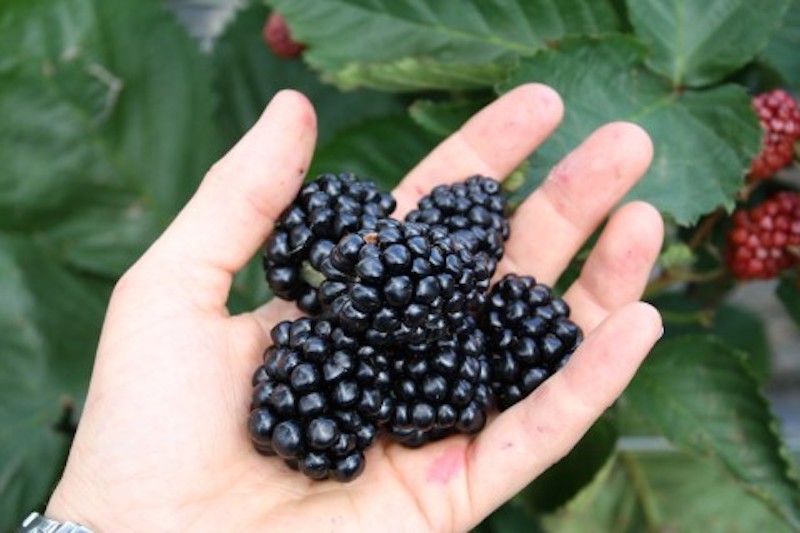
Image: Blackberry (Rubus) Coolaris Patio from Suttons
Easy to care for, heavy cropping, and full of healthy vitamin C, blackberries are humble but have much to offer says John Harrison at Allotment & Gardens. An expert grower, he offers some great advice on growing this delicious but sometimes overlooked fruit. He says blackberries can be vigorous to the point of rampancy but aggressive pruning will keep your bushes in check.
Tanya at Lovely Greens loves to grow thornless blackberries. She says, not only does this type produce some of the biggest, juiciest fruit, but it’s also really easy to care for and propagates readily too. If you’d like to have a go, do check out her brilliant YouTube video on growing and pruning thornless blackberries and also visit her blog for info on how to build a blackberry trellis to support your plants.
Training your blackberries correctly helps your plants to produce maximum yields. Over at Huw Richards’ Youtube channel, this avid and extremely knowledgeable permaculture and no-dig gardening advocate shows you exactly how to train your blackberries effectively. He says you can easily tell the difference between new and old growth because new stems are pink.
Best advice on growing blueberries

Image: Blueberry ‘Elliott’ from Suttons
Blueberries are crammed with essential nutrients, minerals and health-boosting polyphenols, so growing your own is well worth the effort. Instagrammer Jess from @allotment_and_cake has a large blueberry plant that thrives in a spot by her back door, where it gets plenty of sunshine and shelter. Her top tip? “Plant the bush in ericaceous soil, and feed with a slow-release ericaceous feed. It’s what they like best.”
Some people think blueberries do best in pots, says Tony at Simplify Gardening. His view is that getting abundant harvests from your blueberries is simply a matter of providing an ideal environment. With this in mind, you must check out Tony’s excellent video in which he shows you the best way to plant your blueberries in beds. As the video shows, his harvests are mammoth!
If your preferred option is to grow your blueberries in containers, Alan from Down to Earth agrees. He says his instinct is that this helps maintain a steady temperature round the roots. If you’re wondering which receptacles are best, Alan says “oak barrels cut in half make excellent containers to grow fresh blueberries in.” Do take a look at his blog post for full growing instructions.
According to Ben at GrowVeg, blueberry bushes are pretty low maintenance if you plant them in an acidic mix and make sure they have access to plenty of sunshine. In his engaging video on growing berries in containers, he recommends watering your bushes with rainwater, as tap water contains lime, which dilutes the acidity of soil over time.
As soon as your blueberries start to ripen, you’ll need to cover them with netting so they don’t get eaten by birds. If you need a little inspiration, check out the ingenious makeshift fruit cage created by Christina over at @thepensivegardener.
Best advice on growing gooseberries
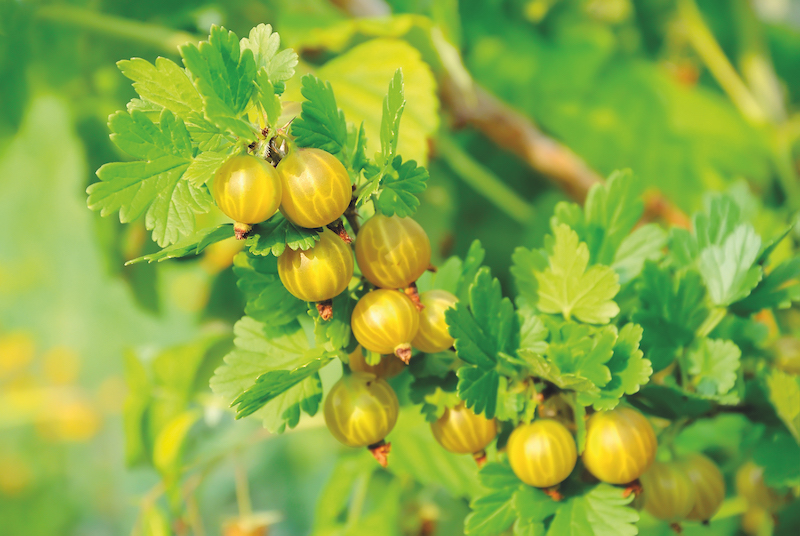
Image: Gooseberry ‘Giggles Gold’ from Suttons
Gooseberries like a site in full sun with moist and well-drained soil, “but they will also grow in dappled shade and can be grown in pots and containers,” says John Moore at Pyracantha. He recommends giving the soil a boost with some well-rotted manure before planting your gooseberry bushes at least 5ft apart to give them plenty of room to grow and crop.
Gooseberry bushes have a tendency to become quite straggly, says Marie at Plews Garden Design. She suggests getting off to a good start by training them right from the get-go. Do check out her super-informative post for thoughts on growing your goosegogs in bushes, cordons, half standards, and fans. Red gooseberries fanned across a north facing wall look wonderfully decorative, says Marie.
Pruning is essential for maintaining the vigour of your gooseberry bushes. For information on when and how to go about it, Lee at Garden Ninja is your go-to source. He says the first stage, once you’ve grabbed yourself some thick, protective gardening gloves, is to cut out stems that cross or rub, or which are damaged or dead. For more advice on pruning gooseberry bushes, check out Lee’s post.
Gooseberry sawflies are, as the name suggests, a common pest, the larvae of which feast on the foliage of gooseberry bushes. Fixes include picking them off, spraying with neem oil or garlic spray, watering in nematodes and encouraging birds and ground beetles to visit your garden and eat the foe. To get a close-up look at the larvae in action, head over to Grow with Kit’s excellent YouTube video, which also explains how to avoid infestations.
Best advice on growing raspberries
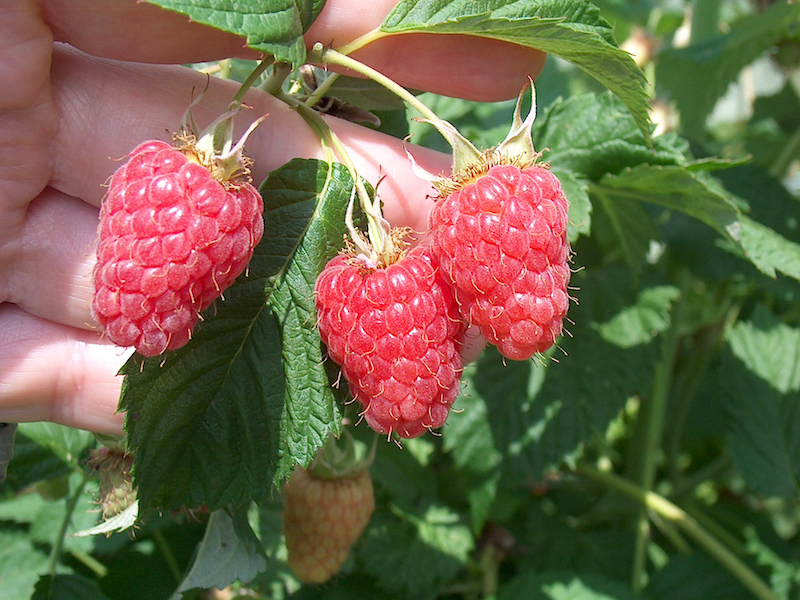
Image: Raspberry ‘Malling Minerva’ from Suttons
There are two types of raspberries – summer-fruiting and autumn-fruiting. If you’ve never grown them before, the Suttons horticultural team suggests starting with autumn-fruiting raspberries, which are easy to grow and produce a crop from the very first season. Plant each of your autumn-fruiting raspberry canes 60cm (2′) apart, and if you’re planting several rows, leave about 2.2 metres (7′) between them.
There’s a little more to growing summer-fruiting raspberries, but if you’re keen to give it a whirl, visit the Suttons blog for a beginner’s guide. As well as discovering how to successfully plant and care for these tasty berries, you’ll discover how to support them by tying the canes into horizontal wires on a wall, fence or garden shed.
Instagrammer Louise from @our_little_veg_garden believes her raspberry plants are the easiest and most productive thing in her garden, as she neglected them for ten years and they’re still going strong. “This 1m by 1.5m patch of canes produces a bowl of raspberries per day for several months in the summer. All I do now is cut the canes back in November and mulch them with my old potato compost. They only get watered by the rain and never fed.”
Anyone for a yellow raspberry? You’re in for a treat, says Julia Parker from @parkers_patch: “If you haven’t tasted a yellow raspberry they are tastier and sweeter than their red cousins.” With that recommendation, you’re sure to want to get planting as soon as possible. Autumn, Julia says, is the best time to plant raspberries, because the canes are dormant and the ground is still warm.
Once you’ve grown your first crop and they’re ready to pick, Genevieve Harris from @mrs_trufflepig has a great time saving tip for preserving raspberries. Instead of trying to clean the berries when they’re soft, she simply pops them straight in the freezer until she’s ready to use them. Then, while still frozen, she runs water over them, as it’s “much easier to wash a frozen berry than a fresh one.”
Best advice on growing strawberries
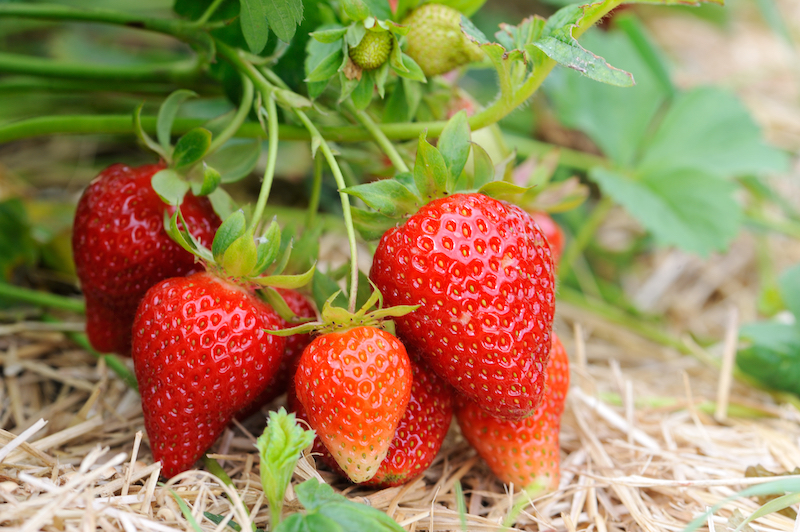
Image: Strawberry ‘Albion’ from Suttons
The Romans used strawberries to treat depressive illness, says Michael Perry, aka Mr Plant Geek. Such is the joy that the sight and taste of this jewel of a fruit evokes, no wonder they found it such a mood booster. Fancy growing some yourself? Michael’s guide to growing strawberries is a great place to start. For full planting instructions, check out his post.
If you implement these 10 tips to grow the best strawberries ever, you’re guaranteed to do just that, says Tony over at Simplify Gardening. An avid and highly knowledgeable gardener with great advice to share, his first tip is to get the growing conditions right: “Strawberries need sun, shelter, and very good fertile soil that’s well drained.” Check out his video for more excellent strawberry growing tips.
Is growing space an issue for you? In her comprehensive article How to Grow Strawberries, Carol Bartlett aka The Sunday Gardener, recommends planting them in containers such as hanging baskets. As well as enjoying better air circulation, strawberries grown in containers aren’t troubled by pests such as ants, although they will need a plentiful supply of water and feed to avoid drying out.
Strawberries are so bright and tasty, it’s no wonder the birds love them just as much as we do. Over at @helenlikesplants, keen gardener Helen uses a simple net tunnel to protect her harvest. But she admits that they leave one patch uncovered so the birds can enjoy some too! Watch her Instagram video to see the best berry of the day.
Do you want an early crop of strawberries before everyone else? Over at @robsallotment, Rob advises potting up your runners in January or February and keeping them in a greenhouse, cold frame or conservatory. By bringing them undercover, your plants should fruit around four weeks earlier than those outside. Rob’s trying a new French variety called ‘Mara des Bois’. Follow him on Insta to see whether the flavour lives up to its reputation.
Not only are blackberries, raspberries, gooseberries, blueberries and strawberries easy to plant and care for, the reward to effort ratio is very definitely tilted in your favour. We hope all this inspiring and informative berry knowhow inspires you to have a go at growing your own soft fruit.
Lead Image: Strawberry ‘Vibrant’ from Suttons
See expert contributors here
- Benedict Vanheems, BSc. (Hons) degree in horticulture, garden and wildlife YouTuber, writer and editor.
- Pete, Gardening blogger, new caretaker of the ‘Real Men Sow’ blog.
- Helen, @helenlikesplants, RHS level 2, member of National Veg Society, content creator.
- Clare, Farmer, allotmenteer, gardening content creator.
- Tanya Anderson, award winning author, teacher, and YouTube content creator.
- Huw Richards, Gardening YouTuber, author.
- Jess, Allotmenteer, content creator, garden designer.
- Suttons Horticultural Team.
- Alan Down, Garden writer, blogger, radio & TV, consultant. President of the Horticultural Trades Association.
- Marie Shallcross, Garden consultant and garden designer, gardening teacher, garden writer.
- Christina, Organic gardener, allotmenteer
- Carol Bartlett, Gardening blogger and content creator.
- John Moore, City and Guilds horticultural qualifications, former nurseryman.
- Lee Burkhill, RHS Multi Award winning Garden Designer & TV Presenter.
- Kit Quint, Gardening YouTuber
- Louise, Community gardener, content creator.
- Julie Parker, gardener, author, gardening course runner, consultant.
- John Harrison, Allotment blogger, winner of Grow Your Own’s ‘Great British Growing Awards’ 2015, author and garden writer.
- Genevieve Harris, Lifestyle and fashion influencer, YouTuber.
- Michael Perry, National Diploma in Horticulture, TV presenter, author, gardening content creator, podcaster.
- Tony O’Neill, Gardening content creator, author, YouTuber. Winner of Ezoic Publisher of the Year award 2021.
- Rob Smith, Winner of BBC2’s Big Allotment Challenge, gardening columnist, kitchen gardener, author.
Last Updated on May 23, 2025 by Suttons Horticultural Team

